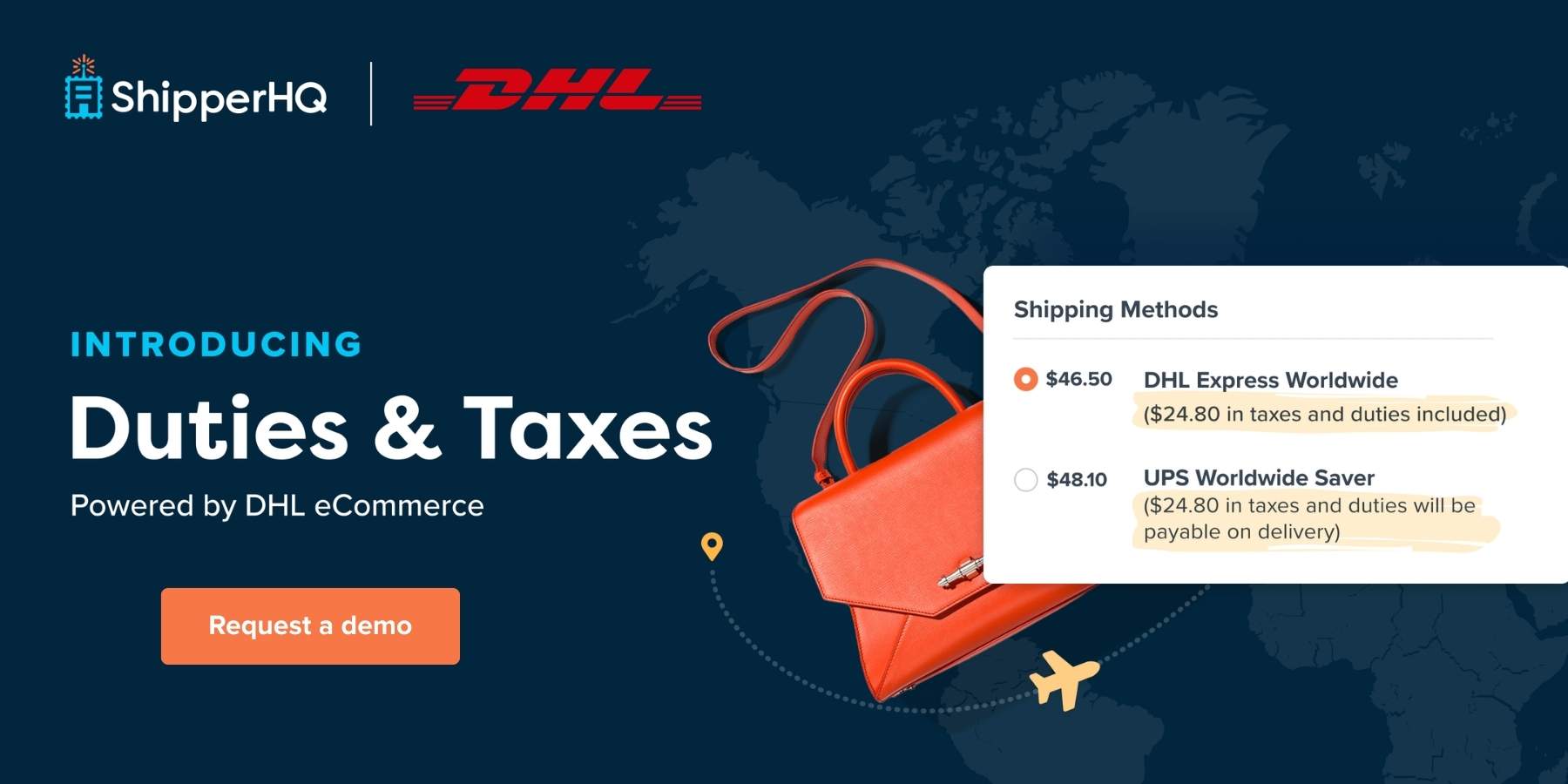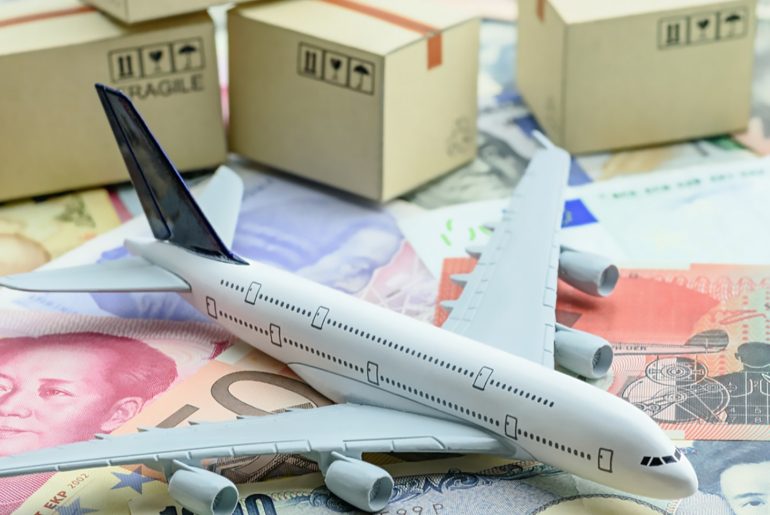Cross Border Shipping 101
As an online merchant, cross border shipping services can be a little terrifying. What’s up with customs? Why is shipping across a border so expensive? Where did these zillions of shipping carriers come from?
It can be tempting to stick to shipping to customers within your own borders and call it a day. But if you’re not shipping cross-border, you’re likely missing out on a $2.44T opportunity.
To help you navigate this, we’ve just released a new Duties & Taxes feature, your essential solution to simplifying international shipping and avoiding costly shipping surprises. Read our feature blog for more insights.
There are numerous reasons why you should be shipping internationally. This includes all the usual suspects like “the market is out there,” and “your competitors are doing it,” but we think the whole list is worth a read.
So if you’re sold on cross border shipping, but have no idea where to start, we’re here to help.
Choosing Your Products and Market
Much of your cross-border shipping experience is going to depend on where you are shipping and what products you are sending to customers. It’s a good idea to test your international shipping strategy by dipping a toe in the water before diving in.
Choose Your Market
Chances are, you already know where your products are in demand. Online shoppers are not always shy about attempting to have an order shipped internationally or writing into support to ask you to support their country.
Take a look at your store’s analytics. Do you get a lot of traffic from a certain country? Is your support team constantly fielding queries asking why you don’t ship to Region X?
Then start there, where you know your products are already in demand.
Alternatively, you can choose to test the waters with a close market with long-established cross border shipping routes. In the U.S., that could mean Canada or Mexico. In the UK, that might mean the EU/Continental Europe.
Choose Your Products
Once you’ve chosen your market, your next step is to pick the products you want to ship internationally. We recommend starting with small, light, and durable items, like clothing.
These types of items are less likely to run into snafus when making stops in the international shipping process.
But before you pack up a shipment of lithium-ion batteries wrapped in U.S. postage stamps and send them on their way, there are a few things you need to know.
Country or Territory Regulations
International shipping between countries is highly regulated for all kinds of reasons. Before you lovingly plaster a label on your first international shipment, read up on the rule.
UPS has a handy resource where you can look up shipping regulations and restrictions based on point of origin and shipping destination.
Some countries may require that you obtain a license or other special provision before importing goods. For example, you need extra permits to ship meat to Mexico, so they probably aren’t the ideal market to test out your new Steak o’ the Month subscription box.
Shipping within the United States, within the European Union, and outside of these areas each comes with its own unique regulations. Within the U.S., cross-border shipping to neighboring countries such as Mexico and Canada may require special permits or licenses, especially for certain goods like food products.
In the European Union, thanks to the single market, goods can generally be moved between member countries with less red tape, although VAT regulations can be complex and vary between countries.
Shipping outside these areas may require additional documentation and be subject to varying tariff and customs regulations depending on bilateral and multilateral trade agreements.
Restricted Items
Like the aforementioned lithium-ion batteries, some items are universally restricted and/or require a lot of extra hoop-jumping to ship internationally.
This is because they can be dangerous, like high-powered magnets on an airplane, or illegal, like ivory. ( …Or because they’re postage stamps. UPS will not ship U.S. postage stamps outside the U.S.)
But never fear, some restrictions are carrier-specific. So if one carrier won’t ship your product, another may answer the call. Don’t give up!
Keep it Simple
Cross-border shipping is more involved than domestic shipping. We suggest you start with high-profit margin items that you can afford to lose if your first experiment doesn’t work out. In other words, consider testing the international shipping waters by sending books, not hot tubs.
Once you’ve chosen your products and market, don’t be surprised when things change up for you. Tariffs, treaties, and other changes may suddenly mean that a new market opens up, or something that you happily shipped to your customers in Country X yesterday is suddenly prohibited today.
It can be extremely difficult to keep an eye on changes, especially with the current tariff unease worldwide. Merchants must use software to help them keep an eye on changes, not only to the cost of shipping, but also changes in what can and can’t be shipped.
4 Ways to Prepare Your Online Store for International Shipping
1. Create a local website that uses the native language and phrases
2. Price items at a margin that takes into account duties & taxes
3. Have a clear returns policy stated prominently on your FAQ page, product pages, and checkout page
4. Work with a shipping technology partner that lets you set up shipping rules and restrictions, like ShipperHQ, so you can stay compliant with the law.
Tracking Cross Border Shipping
When it comes to cross border shipping, being able to track your shipments is crucial. Most shipping carriers provide some form of tracking, usually through a unique tracking number that allows you to follow your package as it moves through various shipping stages.
However, the level of detail and frequency of updates can vary widely. Some carriers provide real-time updates, while others may only provide updates when the package reaches certain key points in the shipping process.
Tracking helps both you and your customers to keep tabs on where the package is, estimate delivery times, and in case of any issues, address them promptly.
Nail Down Cross Border Shipping Logistics
Choose Your Carrier(s)
You have a ton of options when it comes to shipping items cross-border. Postal mail, like the United States Postal Service (USPS) or Canada Post, is cost-effective, but often excruciatingly slow.
Express carriers cost more but can be much faster and offer perks like insurance and tracking that will give you and your customers peace of mind that the purchase is on its way.
Understand Customs and Duties
Think of customs and duties as taxes or tariffs on the items you import. Depending on things like what the product is, what it’s made of, its value and quantity, where you’re shipping from and the origin point of your products, you (or your customer) are likely going to have to pay extra as a cost of doing business for importing goods into a country.
You have a couple of options here:
- Delivery Duty Paid (DDP) – The seller pays for all duties, import clearance, and taxes when a parcel arrives in the destination country. With this approach, using our Duties & Taxes feature, the estimated fees are included with the shipping rate. Messaging indicates the cost of duties and taxes.
- Delivery Duty Unpaid (DDU) – The customer is responsible for paying all duties, import clearance, and taxes when a parcel arrives in the destination country. If you choose this route, be sure to let the customer know up front that they will be responsible for duties, otherwise, you could end up with an angry customer.
With ShipperHQ’s new Duties & Taxes feature, powered by DHL eCommerce, you have two DDU options you can choose from.
- Do not include duties & taxes in the shipping rate, but note the estimated duties & taxes next to the shipping rate.
- Do not display or include duties & taxes with the shipping rate, but note the estimated duties & taxes in the order comments.

Create a Local Warehouse
If you can afford to set up a warehouse within the country where a lot of your international customers are located, there are a lot of great benefits.
For one, you can easily comply with shipping regulations within the country by using a local wholesaler or vendor(s) who can manufacture your items.
Having a local warehouse also means you can decrease the time required to deliver to items to your customers and reduce the cost of each delivery since no duties have to be paid.
Offer Varied Delivery Options
Some of your customers will want their purchase immediately. Others may be more price-conscious and defect to a competitor if the total price climbs too high. One way you can please everybody is by offering up choices. Price-conscious customers can save some money with slower shipping options, while the people who forgot their mom’s birthday can shell out extra for express shipping.
These days, many online shoppers have come to expect free shipping, even on international orders. Check out our guide to offering free shipping without busting your budget here.
Be Upfront And Transparent About Shipping Costs
The last thing you want to do is surprise your customers with an enormous grand total when they’re about to hit “Buy Now.” Or worse, shipping something around the world only for the customer to refuse to accept the shipment because of the high duties.
Cross Border Success Story: Dive Gear Express
Since Dive Gear Express‘ online shop opened in 2003, it has emphasized fast shipping and favorable prices as a part of its overall shipping strategy. By doing this, they have transformed from a local Florida dive shop into an international hub for scuba diving equipment.
A big reason for their success also stems from their strategic free shipping Super Saver program.
At Dive Gear Express, there are 4 different free shipping methods: Contiguous US, Non-Continental US, International, and Expedited. The first three options are location-based and depend on a customer’s cart total, while the fourth “expedited” method displays higher subtotal orders regardless of location.
With ShipperHQ, the eCommerce scuba shop is able to filter down these free shipping options based on a customer’s dollar amount, location, and products in the cart. By using product segmentation and shipping rules, they can designate what carriers and options are shown to customers who buy large versus small items.
“ShipperHQ gave us tools to offer our customers more options on how they want to receive their orders, and made our complex shipping methods and calculations a lot easier for us to handle for international customers.“
Emily Pepperman, Web/IT Support at Dive Gear Express
Wrapping Up: Get Cross Border Shipping Done Right With ShipperHQ
In present times, the main challenges that cross border shipping is facing include handling complex customs and tariff regulations which can change rapidly due to geopolitical situations, ensuring the safe and timely delivery of goods in the face of disruptions caused by global events like pandemics, and staying competitive in an increasingly global market where customers have a wide range of options for purchasing goods.
What Sets ShipperHQ’s Duties & Taxes Solution Apart
- Carrier Agnostic: Integrate with any carrier of your choice.
- Powered by DHL: Enjoy highly accurate and reliable duty and tax calculations.
- Automated: Display real-time calculations at checkout.
- You’re in Control: Choose between Delivery Duty Paid (DDP) and Delivery Duty Unpaid (DDU) approaches.
- Fully Integrated: Duties and taxes are seamlessly integrated into the checkout shipping methods.
See how our Duties & Taxes feature can help you automate duty and tax calculations and improve the customer experience. Request a demo today!
FAQs About Cross Border Shipping
What documents are needed for cross border shipping?
This may vary based on the specific countries involved, but generally, you’ll need a commercial invoice, a bill of lading or airway bill, and possibly a packing list or Certificate of Origin.
Why insure cross border shipments?
Insuring your shipments provides financial protection in case of loss or damage during transit.
What are International trade regulations?
International trade regulations are rules set up by individual countries or groups of countries that govern how goods can be imported or exported. They can include everything from safety and quality standards to tariffs and import restrictions.
How to resolve cross border shipping disputes?
Disputes can often be resolved through direct negotiation, mediation, or, in some cases, through international arbitration.
What impacts cross border shipping times?
Shipping times can be impacted by a variety of factors, including the distance between the origin and destination, the method of shipping, customs processing times, and external events like weather or geopolitical situations.”






